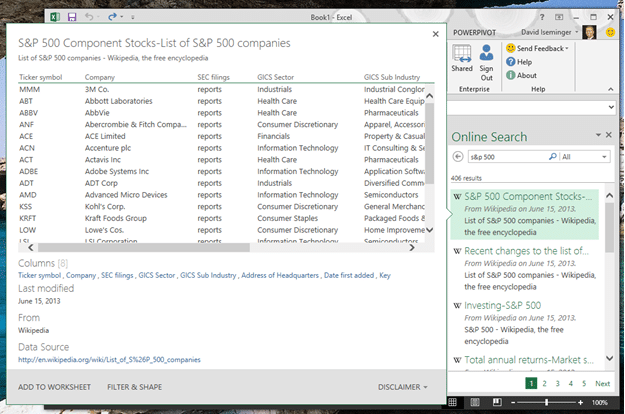Dynamics NAV 2015 – Harnessing the Power of Business Intelligence (BI)
Right on the heels of the successful release of Dynamics NAV 2013 R2, the Microsoft development team has shifted their focus since late December 2013 and has been hard at work on the next version of Dynamics NAV, codenamed “Crete”.
Microsoft has already started gearing up the marketing machine by announcing some of the key features and technologies that will be included with the release of the product, and one of those announcements centers around BI, or more specifically, Power BI.
Power BI is a cloud-based business intelligence service that integrates with Office 365 and allows end-users to use tools commonly known in a business (Excel, SharePoint, Web/Mobile devices). Some of the key features/services included in the Power BI solution:
- Power Query – Allows for data connections to public and corporate data sources.
- Power Pivot – Extends the data in Excel by adding relationships, custom measures, hierarchies, and Key Performance Indicators (KPI’s). It also uses an in-memory technology with the generated models so that end-users can analyze millions of rows of data at lightning speed.
- Power View – Allows for the creation of reports and views through interactive charts and graphs that allow end-users to visually explore the data captured in the Excel Power Pivot model.
- Power Map – Allows for end-users to integrate with geospatial data to create a 3D map experience in Excel.
Above: Power Query used to grab public information to add to a Worksheet in Excel
These new technologies allow for integration with Dynamics NAV through the use of the ODATA web services. IT Administrators can register on-premise data sources in the Power BI Admin Center and then grant access to end-users for the feed.
At this time (end of May 2014), the feature validation phase of NAV ‘Crete’ should be concluding and in June 2014 we’re expecting a Customer Technology Preview (CTP) release that will allow for partners and customers to experiment with the new features introduced with NAV ‘Crete’. The Stoneridge team has already started ramping up, as we feel that data visualization is a key feature of an ERP system that will no longer be a stand-alone secondary project, but integrated with the roll-out of your Microsoft Dynamics NAV solution.
We will be posting a deeper look at the BI integration later this year. Check back then to see how you can harness this technology in your NAV deployment and the benefits and drawbacks that we have discovered to save you time and money when implementing your solution!
Under the terms of this license, you are authorized to share and redistribute the content across various mediums, subject to adherence to the specified conditions: you must provide proper attribution to Stoneridge as the original creator in a manner that does not imply their endorsement of your use, the material is to be utilized solely for non-commercial purposes, and alterations, modifications, or derivative works based on the original material are strictly prohibited.
Responsibility rests with the licensee to ensure that their use of the material does not violate any other rights.






